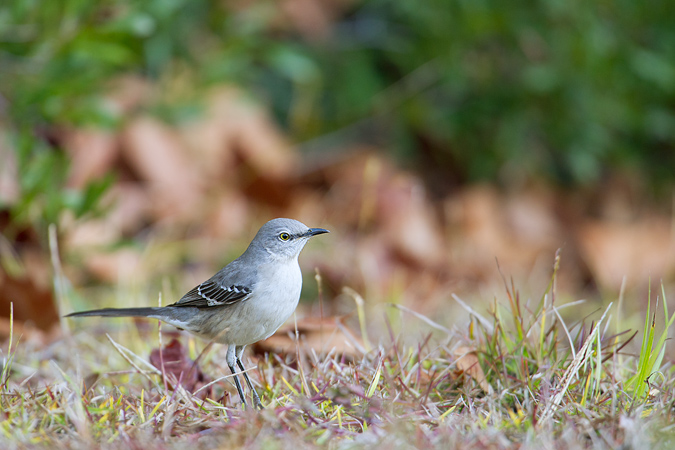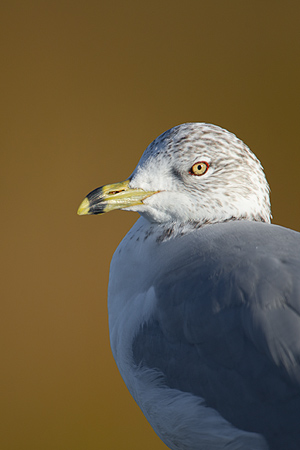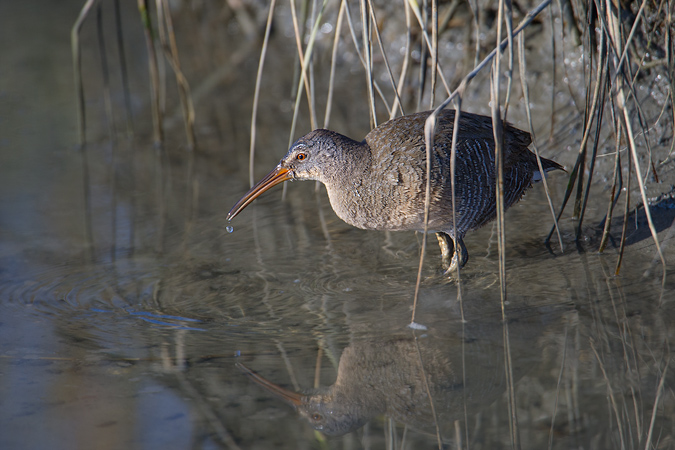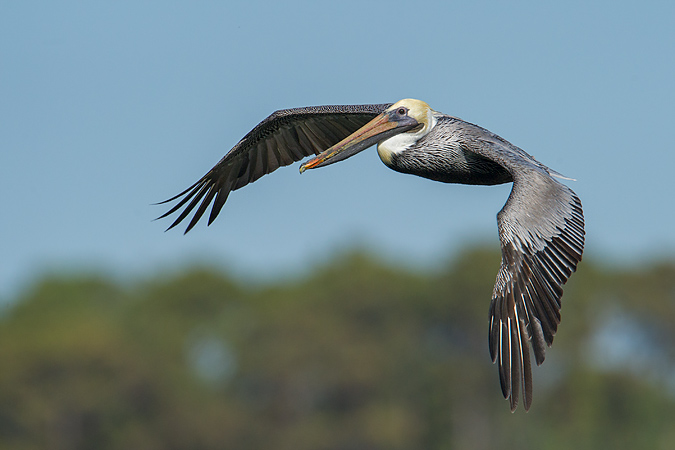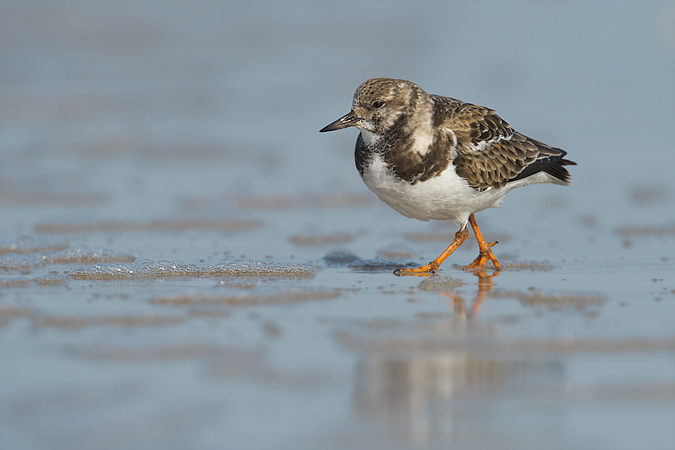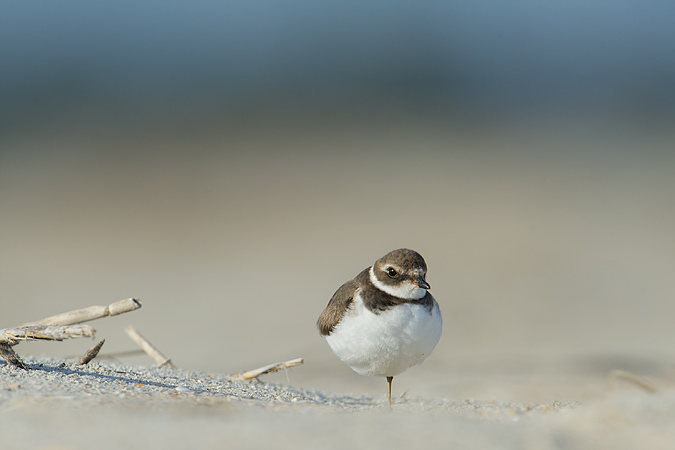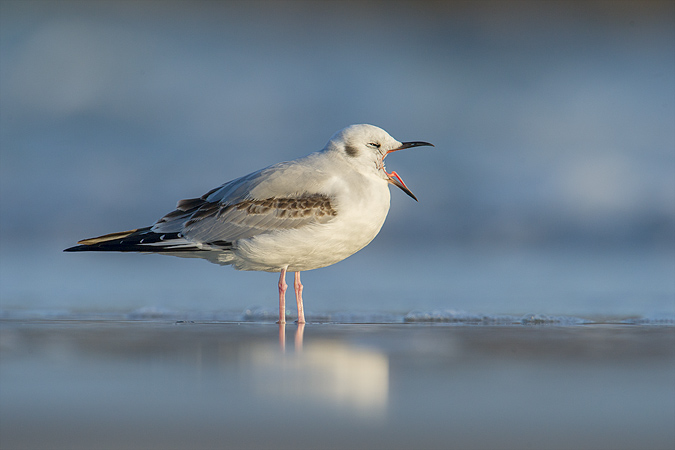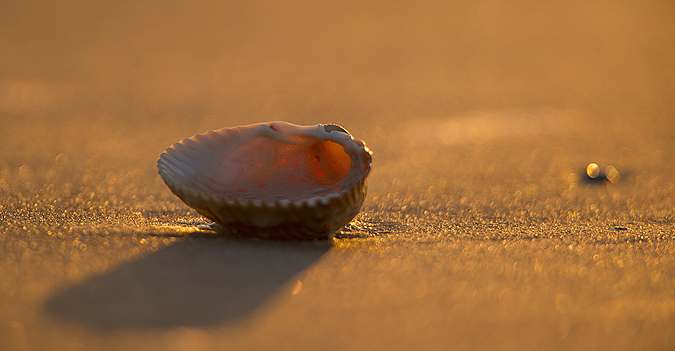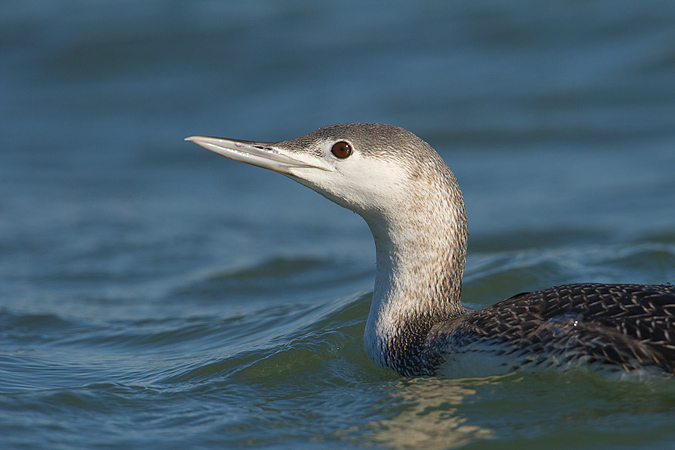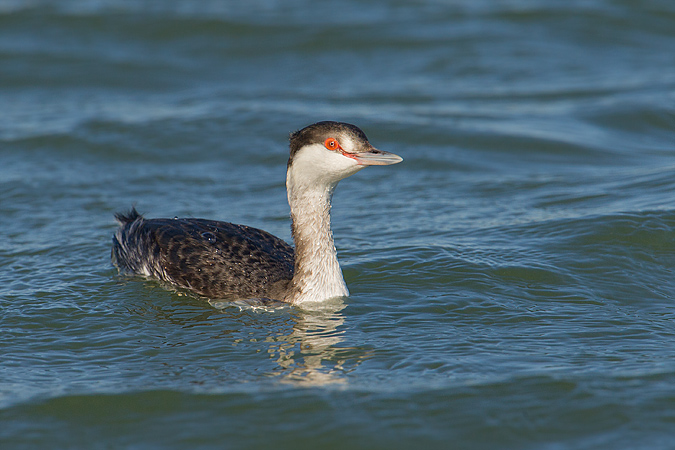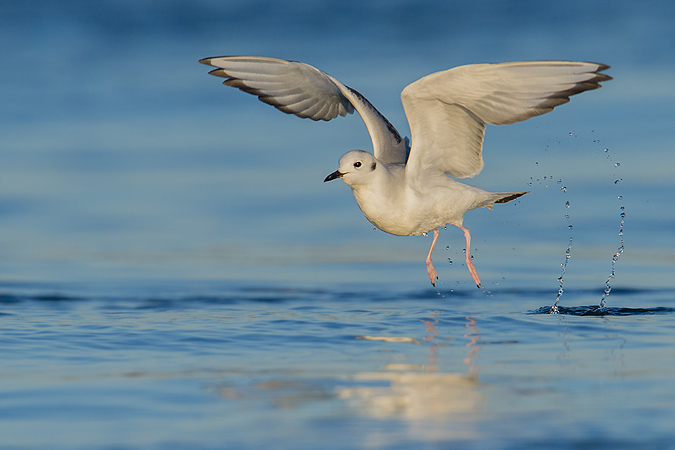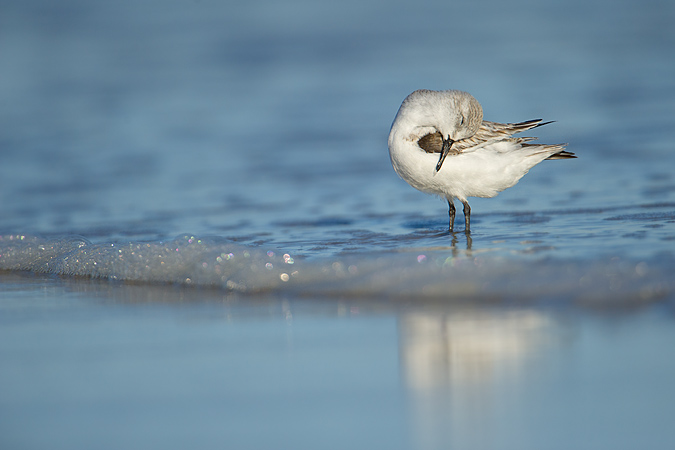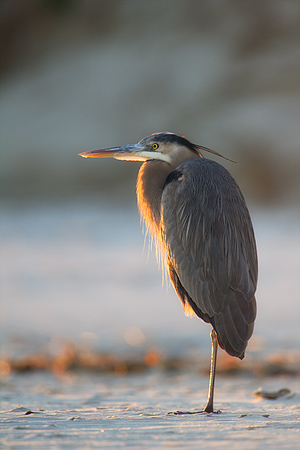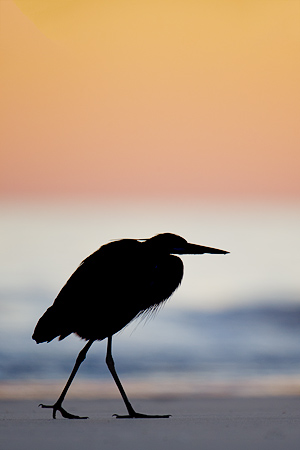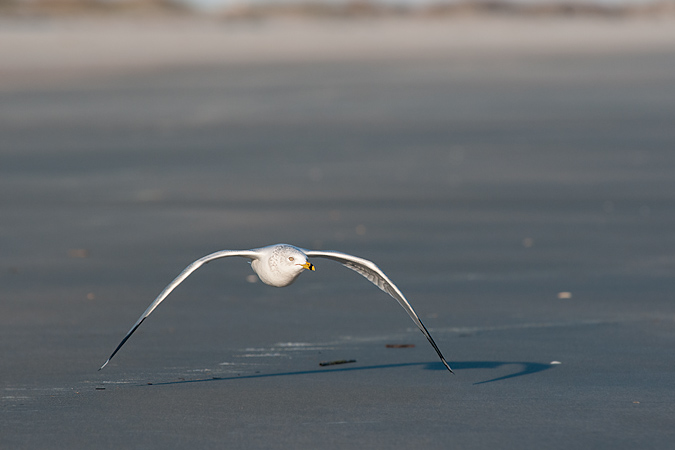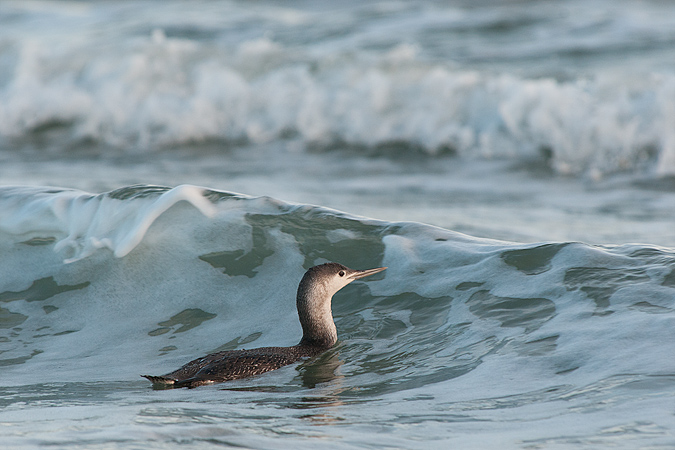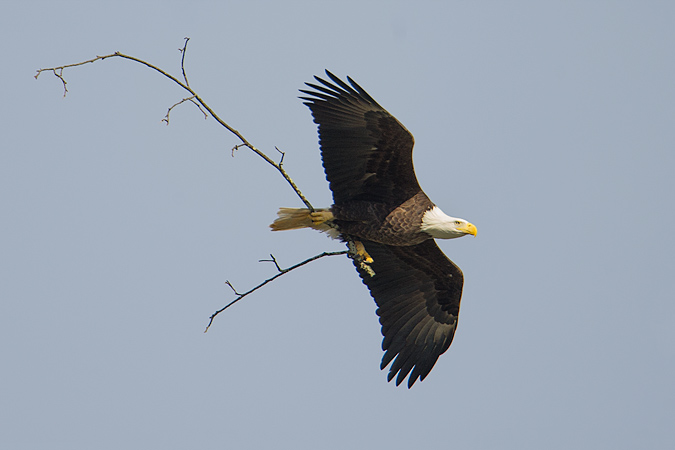I hope everyone had a great New Year! I went to bed early last night so I could get up early to start this year doing my favorite thing on the planet – photographing wildlife. I had spent the last day and a half photographing at the beach and jetty, so today I tried for something a little bit different. I started off the morning at some freshwater ponds to see if I could have some luck with the ducks. There were quite a few ducks, but they weren’t coming anywhere close to the shore where I was. So I decided I’d be better off trying something else and headed towards the forests and fields. The first subject I had some luck with was a Northern Mockingbird.
After a few songbirds, I headed over to the saltmarsh. There were a couple of birds who were crying out for some glamour portraits. This Herring Gull was one who kept asking. Who am I not to oblige?
Huntington Beach State Park is great for photographing many different birds, but it is the best place I know of for Clapper Rails. I always see at least one Clapper Rail every day that I spend some time in the saltmarsh here. Clapper Rails are generally very difficult birds to photograph. They’re fairly common in saltmarshes all over the Atlantic and Gulf coasts, but they are usually heard and not seen. When they are seen, they are usually in a tangle of vegetation. They actually come a little bit out into the open at Huntington Beach. Here is one that I had a blast photographing. After I first saw it, it proceeded to bathe in front of me and stretch its wings before heading back into the cordgrass.
Right as I was about to leave the saltmarsh, a lone Brown Pelican flew over. These kind of opportunities are very easy to miss if you’re not expecting them. I wasn’t really ready this time, but had a bit of luck as it flew over long enough to enable me to get a photograph.
I had resisted it all morning long, but by the afternoon I gave in and headed to the beach. As expected, the beach was a bustle of activity. You won’t know it from the photographs, but today was windy and exceptionally cold for South Carolina. This and the holiday meant that nobody was at the beach which means more birds. This Ruddy Turnstone was one of the shorebirds who was scanning the water’s edge for tasty morsels.
I mentioned that it was cold and windy. The wind was strong that most of the birds weren’t out and about at the water’s edge. Instead most were in a large flock that had huddled together in the sand of the dunes for protection against the wind. The flock was mostly Dunlins and Semi-palmated Plovers like this bird. Most of the time they remained down into the sand, but from time to time they would adjust their position like this one was doing here.
I ended the first day of 2012 working with some great Bonaparte’s Gulls. Much of the time they were doing ‘walking on the waves’ routine. As it got later, they took a rest on the shore. This one opened up with one of the biggest yawns I have seen. It looks big in this photo, but it actually stretched its mouth much wider. The shots with its beak the widest looked a bit uncomfortable, so I settled on this one as my favorite of the yawn photos. I hope everyone enjoyed their start to the year – I definitely had a blast!
Every day from the first of the year to the last, the sun comes up and then sets (assuming you’re not above the Arctic Circle). Sometimes clouds obscure this from us, but more often than not you can see it. It truly is a wonderful event to behold. If you haven’t watched a sunrise in a while, I encourage you to do so. Take someone who is special with you or go alone, but just take the time to watch. Today I watched it on one of my favorite places to watch it, the ocean shore. The light that comes when the sun rises is very special, but it is also very ephemeral. In a matter of seconds it changes dramatically. Today there was a special glow that illuminated this cockle on the sand. Nothing fancy about this shot, but the sunrise and the sand are simple things.
After the spectacular sunrise, I walked down Huntington Beach to the rocky jetty that is here. At this jetty there are lots of birds fishing in the inlet waters around the rocks. As with all jetties, the trick is to get low on the rocks. It takes a bit of time and care not to hurt yourself, but it is essential to getting a good angle on your subject. One of the winter visitors to the jetty was this Common Loon. With a bit of observation and practice you can predict where and when a loon will emerge from its dive. That’s what I did to get close for this photograph.
There were some other winter visitors to the jetty. These birds are typically birds that come down from Canada or the upper parts of the United States. In the summer, they live in freshwater habitats but adapt to marine life for the winter. There were a few Horned Grebes around. These birds are a little bit harder to get close to than the loons, but it is still possible with the right approach. These birds are gorgeous in their breeding plumage, but even their winter plumage is striking. Their bright red eyes give them a distinctive look.
I spent most of the day out on the jetty. The light changed a bit over the course of the day. One of the great things about December is that for most of the day, the light is good enough to photograph. As time passed and the tides changed, some different birds showed up. I got a great kick out of watching a group of Bonaparte’s Gulls that came in. They were flying atop the surface of the water and periodically landing or bending down to snatch food off the surface water. This one is coming off the water after having landed for a few seconds.
When the tides became unfavorable, I worked my way back down the shoreline for the afternoon hours. It is important to pay attention to the behavior of your wildlife subjects. Many times they are just standing there resting, but sometimes they are busy with something else. I noticed a Sanderling that was cleaning itself and preening. Birds usually preen for a little bit of time, so you have a chance to get into position. Here the Sanderling is rubbing its wing near the end of its preening.
The last bird I encountered on my walk back was a docile Great Blue Heron. Maybe the late sun was putting it at ease, but whatever the reason it wanted nothing more than to soak in the last rays of sunshine.
I love it when you get a great subject like this Great Blue Heron. If you get the time to work lots of different types of shots, you have to take advantage of it. After the sun went down, the heron was still hamming it up for me. Finally he walked a short way to the water. Even when the sun goes down, there are still lots of great photos left out there!
It’s a long drive from the Pennsylvania/Maryland border to South Carolina, but if you start early you can make good time. Also at 5 am there is little traffic around D.C. Instead of going all the way home, I had a stop planned for 4 nights at one of the best locations in the northern part of the state – Huntington Beach State Park. I had a great time photographing there in the late summer and was looking forward to photographing there again. It was great to get out of the car after all those hours and be greeted by beautiful scenery. During a walk on the beach, this Ring-billed Gull flew at me. I thought its wings were going to hit the sand!
After this, I had some great bird sightings. The first was a Parasitic Jaeger that was harassing some Forster Terns – a rare bird and the first Jaeger I have seen. Someday I hope to get to photograph these interesting birds on their breeding territory in the Arctic. An opportunity with no chance for a photograph, but exciting nonetheless. After this I saw a Red-throated Loon. What was surprising was how close to shore this bird was. Usually the loons stay a bit offshore but this one was in water only inches deep and very close to the shore. It also had no fear and sometimes surfaced a few feet from where I was. Since it was so close to shore, it had to battle the waves (which broke before it most of the time).
The loon stuck around for nearly an hour. What I hadn’t mentioned was that being so tired from the drive and arriving relatively late, I told myself that I was only going to photograph landscapes and had only brought along the 70-200mm lens. If you had told me that I was going to be photographing a loon full-frame and with just a 70-200, I would surely have laughed. In the end, the shots I liked the most were the ones that captured what was unique about the experience – the breaking waves that were surrounding the loon.
The walk back down the beach after the loon encounter was an enjoyable one. Beaches can have a special character that gives them a unique feel. Over the past two weeks I have been fortunate enough to see three beaches, all which had a very different feel. The Outer Banks were dominated by tall dunes that withstood the ferocity of countless storms. The tranquil beach near Barnegat, New Jersey was broken up by a stone-covered jetty that led to a rich inlet. Lastly Huntington Beach has the calm that is characteristic of many South Carolina beaches. The dunes are much smaller than in the Outer Banks and the shore stretches for miles broken up by saltmarshes and inlets. Some of the sea oats remained from the fall and reached up towards the setting sun.
Today was a bit of a quandry. I definitely wanted to go back to Bombay Hook, but I only had one day left and my main objective was really to get some Bald Eagle fishing photos. So given the situation, I headed back to the eagles at the Conowingo dam. Maybe it would be better today and there would be more eagles? Actually it was worse – a lot worse. There were fewer eagles. On top of that it was mostly a sunny day. Eagles are great to photograph on cloudy days – it brings out the subtle details in their dark and light feathers. On cloudy days, the contrast in eagles is often too much not to mention shadows are everywhere. On top of that, where you photograph from at the dam doesn’t have a great sun angle towards the eagles. I did notice an eagle starting to build a nest in the area (one reason why there might be so few eagles around now, since a nesting pair will try to scare off others). After the first time I saw the eagle, I positioned myself in the best spot I could and waited. The reward was seeing the eagle fly off with this massive branch that it broke off from some of the tall trees in the area. Amazing to think it can carry and fly with such a large branch.
Unfortunately that was far and away the best eagle image of the day. I did have the good fortune to get some help from a photographer from Massachusetts. He was at the dam as well and took pity when he saw me hand-holding the 600mm. He lent me a Sigma 50-500 to handhold for the day. It was great fun to shoot with a new lens. Since I couldn’t use the teleconverters I had, I switched from full-frame to the D300 which has a cropped sensor. This gave me close to the same reach that I had with the 600+1.4TC. In the end, I didn’t have the best of luck with the Sigma. The focusing on it was slower than the Nikon primes + TC and it meant that many of the flight shots weren’t as sharp as what I am used to. It is a very light lens (for what I’m used to) and was great fun to shoot. I really appreciate that kind photographer for giving my arms a much needed break! By late in the morning, the clouds came in. Other birds flock to the fish that come through the dam, and there are more gulls than anything else. Most of the time they are far away, but this Ring-billed Gull came close to where I was, hovering as it scanned the water for fish. Ring-billed Gulls are one of the most agile fliers of all gulls and are able to hover with ease unlike many gulls. Tomorrow would be a long drive down to South Carolina.

